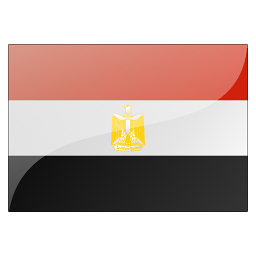



The ‘Red Sea Riviera’ is a place of many different attractions. On the one hand, it is famous (or infamous, depending on your view) for cheap package holidays – overdevelopment has pockmarked the coastline deeply, leaving a trail of megaresorts and half-finished hotels in its wake. Alongside these are some exceptional exclusive resorts secluded from the hustle of the packages. Dig deeper and you will find other, more surprising sides to the region.

Low-key, laid-back and low-rise, Dahab is the Middle East’s prime beach resort for independent travellers.

Egypt’s northern coastline runs for 500km along Mediterranean shores. Its sandy beaches and turquoise-hued sea lure floods of Egyptians here during summer and, in recent years, a number of sprawling resorts have been built facing these crystal waters. Most travellers, however, make a beeline straight to the once-great port city of Alexandria. Eulogised through the centuries, this faded old dame of a metropolis is still by far Egypt's most atmospheric city. Alexandria's fresh sea air, fantastic seafood, ancient history and crumbling gems of belle époque buildings give it a spirit distinctly different from that of Cairo.

On the northern end of the First Cataract, marking ancient Egypt's southern frontier, Aswan has always been of great strategic importance. In ancient times it was a garrison town for the military campaigns against Nubia; its quarries provided the granite used for so many sculptures and obelisks.

The Nile south of Luxor is increasingly hemmed in by the Eastern Desert, its banks lined with grand, well-preserved Graeco-Roman temples at Esna, Edfu and Kom Ombo, and its lush fields punctuated by palm-backed villages – it’s the ideal place to sail through on a Nile boat. The once-great city of Al Kab provides the perfect contrast to the grandeur of the temples, while at Gebel Silsila the river passes through a gorge sacred to the ancients, who used stone from the quarry to built the temples in Luxor. Aswan, the ancient ivory-trading post, has a laid-back atmosphere and plenty of things to see.

In its late-19th-century raffish heyday, Port Said was Egypt’s city of vice and sin. The boozing seafarers and packed brothels may have long since been scrubbed away, but this louche period is evoked still in the waterfront’s muddle of once-grand architecture slowly going to seed.

Rugged and starkly beautiful, the Sinai Peninsula has managed to capture imaginations throughout the centuries. The region has been coveted for its deep religious significance and its strategic position as a crossroads of empires: prophets and pilgrims, conquerors and exiles have all left their footprints on the sands here.

If you want to dig a little deeper into Egyptian culture and history, the area surrounding the capital is home to several intriguing and important sites rarely included on typical Egypt itineraries. Although few can honestly be put in the 'must-see' category – except of course for the majestic ancient site of Saqqara, which lies on the city’s southern edge – those with time up their sleeve will enjoy delving into this lesser-seen region.

Anyone interested in seeing the colossal rock-cut temples without the crowds, visiting Lake Nasser, or listening to Nubian music should hang around in this small Nubian town.

Founded in 331 BC by 25-year-old Alexander the Great, Alexandria (Al Iskendariyya) is the stuff of legend. Its towering Pharos lighthouse, marking the ancient harbour's entrance, was one of the Seven Wonders of the World, and its Great Library was considered the archive of ancient knowledge. Alas, fate dealt the city a spate of cruel blows. The Pharos collapsed and the Great Library was torched. Part of the ancient city disappeared under the sea and part under the modern city, so there are few visible remains of the glorious past.